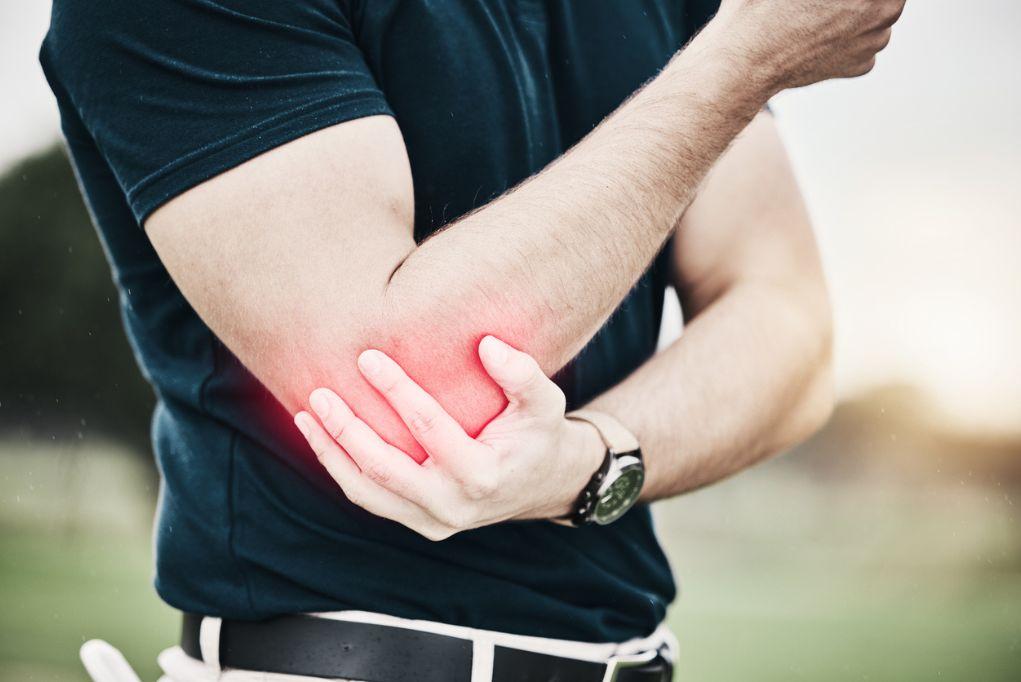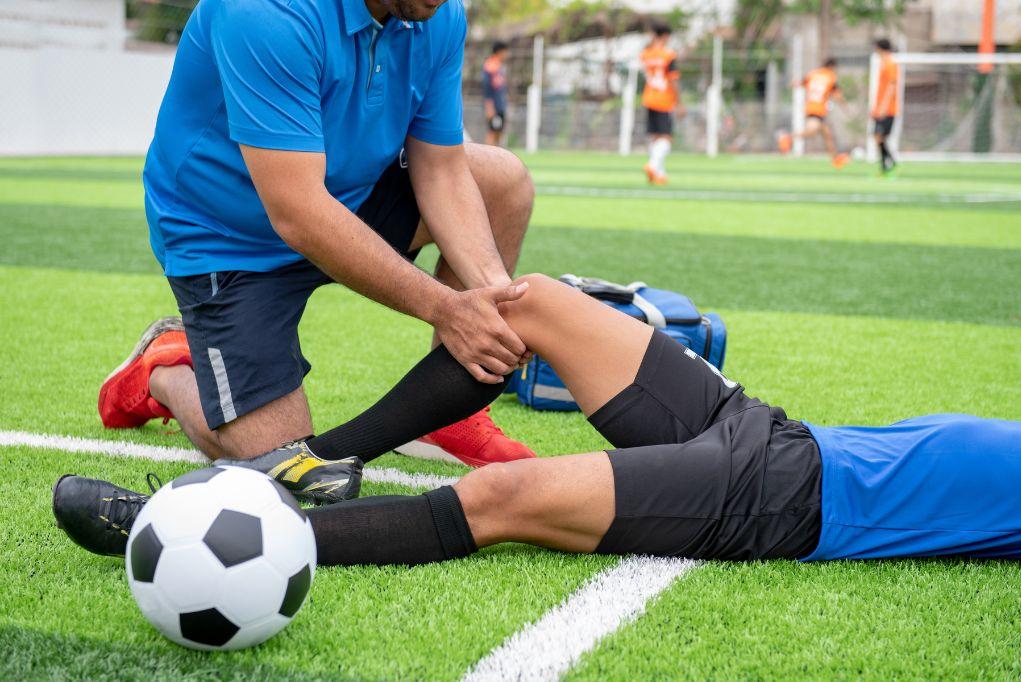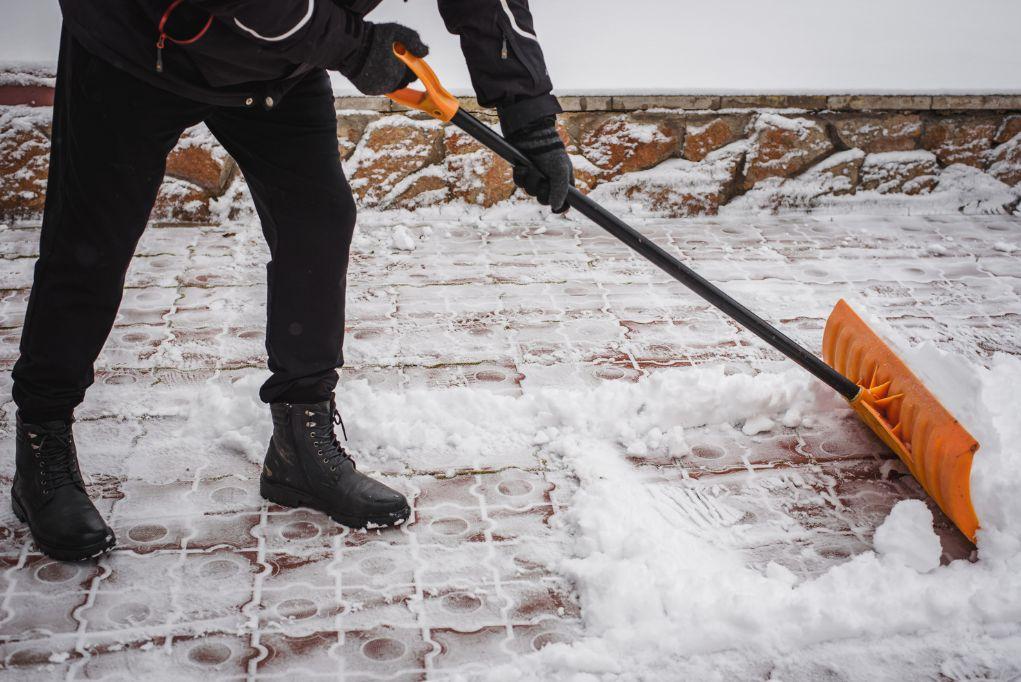Tennis Elbow vs. Golf Elbow: Differences and How to Treat Them
Whether you’re gripping a tennis racket or swinging a golf club, repetitive arm motions can lead to painful conditions known as tennis elbow and golf elbow. These injuries, while similar in many ways, affect different parts of the elbow and require distinct approaches to treatment and recovery. Keep reading as we break down the differences between tennis elbow vs. golf elbow, explore their causes and symptoms, and provide tips for treatment and prevention to help you stay active and pain-free.

What is Tennis Elbow?
Tennis elbow, medically known as lateral epicondylitis, is an overuse injury that affects the tendons on the outer part of the elbow. It’s caused by repetitive wrist and arm motions, particularly those involving gripping, lifting, or twisting.
Causes of Tennis Elbow
Tennis elbow is most commonly associated with racket sports like tennis, where the repetitive backhand stroke can strain the tendons. However, it can also result from any activity that involves repetitive arm motions, such as painting, carpentry, or even typing.
Symptoms of Tennis Elbow
The primary symptom of tennis elbow is pain and tenderness on the outside of the elbow, which can radiate down the forearm. You may also experience:
- Weakness in the forearm
- Difficulty gripping objects
- Pain when lifting or twisting the wrist
- A burning sensation on the outer part of the elbow
What is Golf Elbow?
Golf elbow, also called golfer’s elbow and known medically as medial epicondylitis, affects the tendons on the inner side of the elbow. Like tennis elbow, it results from repetitive motions, but it specifically involves movements that flex the wrist or clench the fingers.
Causes of Golf Elbow
As the name suggests, golf elbow is typically associated with sports like golf, where the repetitive motion of swinging the club puts strain on the inner tendons of the elbow. However, it can also develop from other activities that involve repetitive wrist flexion, such as lifting weights, throwing, or using tools.
Symptoms of Golf Elbow
The main symptom of golf elbow is pain and tenderness on the inside of the elbow, which can extend down the forearm. Additional symptoms may include:
- Weakness in the hands and wrists
- Numbness or tingling in the ring and little fingers
- Pain when making a fist or gripping objects
- Stiffness in the elbow, especially in the morning
Tennis Elbow vs. Golf Elbow: Key Differences
While both conditions involve inflammation of the tendons in the elbow, the key difference lies in the location of the pain:
- Tennis Elbow: Affects the outer part of the elbow (lateral epicondyle).
- Golf Elbow: Affects the inner part of the elbow (medial epicondyle).
These conditions are also linked to different activities and movements. Tennis elbow is generally caused by repetitive wrist extension (such as a tennis backhand), while golf elbow is caused by repetitive wrist flexion (such as gripping a golf club).
Diagnosing Tennis Elbow and Golf Elbow
Proper diagnosis is crucial for effective treatment. At Motion Orthopaedics, we begin with a thorough physical examination, assessing pain, range of motion, and tenderness around the elbow. Your doctor may also ask about your activity history to determine the likely cause of the injury. In some cases, imaging tests such as X-rays or MRI scans may be used to rule out other conditions or confirm the diagnosis.
Treatment Options for Tennis Elbow and Golf Elbow
The treatment approaches for both conditions are largely similar, focusing on reducing pain, improving mobility, and preventing further injury. Here are some effective treatment strategies:
Rest and Activity Modification
One of the most important steps in treating both conditions is to rest the affected arm and avoid activities that exacerbate the pain. This may involve taking a break from sports or modifying your technique to reduce strain on the tendons.
Ice and Anti-inflammatory Medications
Applying ice to the affected area and using over-the-counter anti-inflammatory medications can help reduce pain and swelling. Ice should be applied for 15-20 minutes several times a day.
Physical Therapy
A physical therapist can develop a personalized exercise program to stretch and strengthen the muscles and tendons around the elbow. Therapy may include techniques such as stretching, strengthening exercises, and manual therapy to improve flexibility and promote healing.
Bracing or Splinting
Wearing a brace or splint can help support the elbow and reduce strain on the tendons during daily activities. There are specific braces designed for tennis elbow and golf elbow that target the affected area.
Injections
For persistent pain, your doctor may recommend corticosteroid injections to reduce inflammation or injections that use your body’s own healing factors to promote recovery.
Surgery
In severe or chronic cases where conservative treatments fail to provide relief, surgery may be considered. Surgical options include removing damaged tissue, repairing torn tendons, or debridement to stimulate healing. Recovery from surgery typically involves physical therapy and gradual return to activities.
Tips to Prevent Future Elbow Injuries
Strengthening Exercises
Incorporate exercises that strengthen the muscles of the forearm, wrist, and elbow. Stronger muscles provide better support to the tendons and reduce the risk of injury.
Proper Technique
Ensure you are using proper technique and form during sports and activities. Consider working with a coach or trainer to refine your skills and minimize the risk of overuse injuries.
Warm-up and Stretching
Always warm up before physical activity and include stretching exercises that target the forearm and elbow. A good warm-up increases blood flow to the muscles and prepares them for the demands of your sport.
Gradual Increase in Activity
Gradually increase the intensity and duration of your activity to allow your body to adapt. Avoid sudden increases in activity levels, which can overload the tendons.
Use Appropriate Equipment
Ensure your equipment is suitable for your sport and activity level. For example, using a racket with the correct grip size or a golf club that suits your swing can help reduce strain on the tendons.
When to Seek Medical Attention
If you experience persistent pain in your elbow despite self-care measures, it’s important to seek medical attention. Ignoring the symptoms can lead to chronic pain and prolonged recovery times. At Motion Orthopaedics, our team of specialists can provide a thorough evaluation and personalized treatment plan to help you recover and return to your favorite activities pain-free.
Don’t Let Elbow Pain Keep You Off the Course or Court
If you’re dealing with elbow pain, whether it’s from tennis elbow or golf elbow, Motion Orthopaedics is here to help. Our expert team can diagnose and treat your condition, providing you with the care and support needed to get back to your sport. Contact us today to schedule an appointment and start your journey to recovery.




